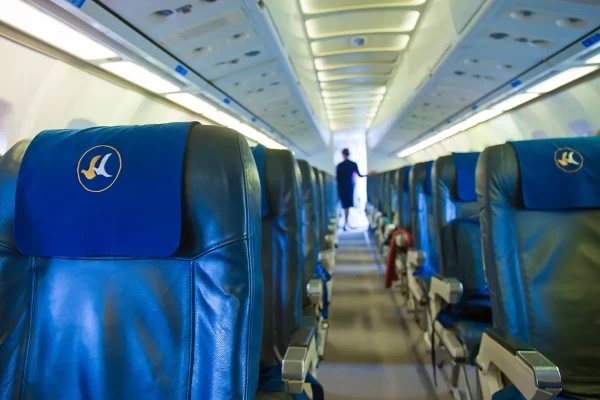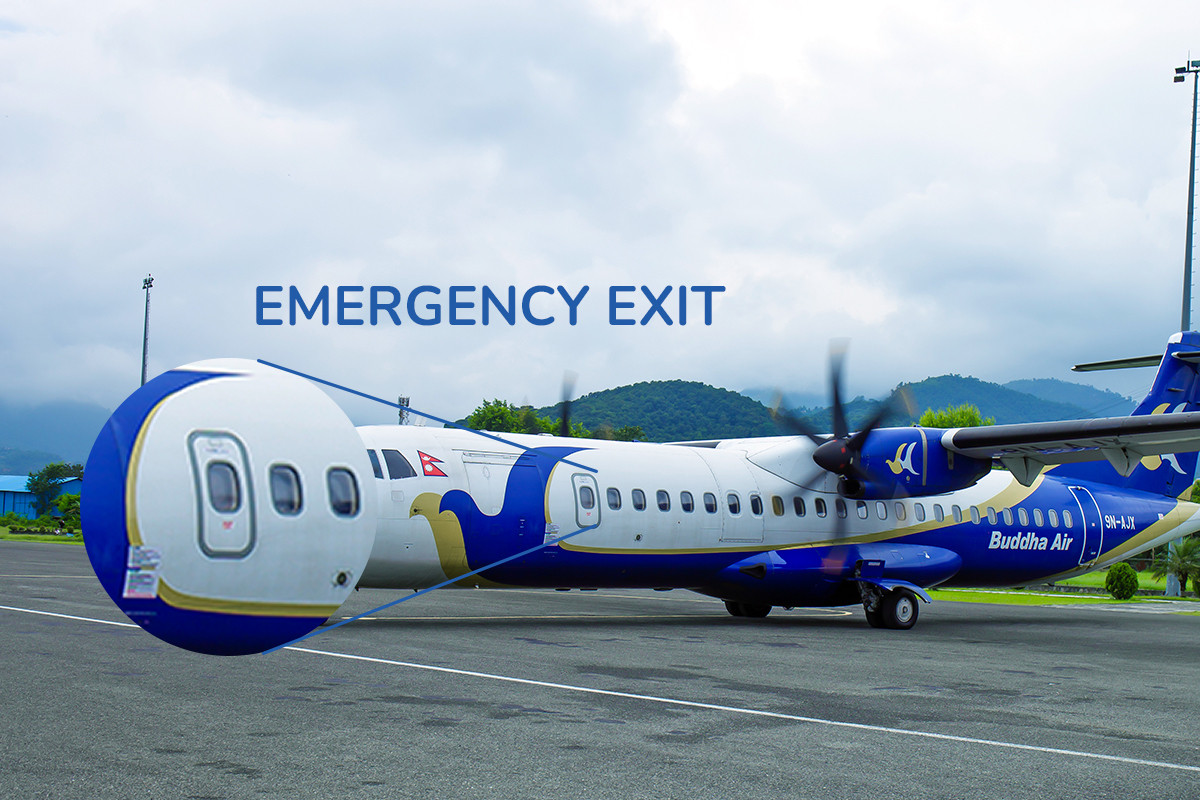Emergency Exit Doors: Everything You Need to Know

Every aircraft comes with one or more than one emergency exit doors. The flight attendant will inform you where the emergency exit door of your plan is located with their curated safety briefings before taking off. ATR-72 has emergency exits located over the wings and at the rear of the aircraft. These doors remain tightly closed during the flight and are designed in a way that they only open when a certain amount of force is applied. During an emergency either when the plane is still on the ground or has just emergency landed due to some mishappenings or problems during the flight, the emergency exit door is intended to provide a swift and safe evacuation from the aircraft.
What do you do when seated in the section near the emergency exit door? As a matter of fact, the passengers seated here are given a brief training in how to open the door in case of an emergency. That is why, there is a criteria in selecting the passenger who is assigned to this seat.
Criteria for Passengers Seated Near the Emergency Exit Door
-
Passengers must be able to travel independently and not require assistance.
-
Must give consent to the airlines to take on their short, but important role in case of emergencies.
-
Should be capable of applying force to open the emergency exit door in case of evacuation.
-
Must be able to understand the crew's instructions about the evacuation procedures.
-
Must be able to communicate the information to other passengers.
If a passenger doesn’t meet the criteria or doesn’t feel comfortable taking on the responsibility, they will be requested to relocate their seat and another qualified passenger will be requested to take on. At
the same time, the passengers seated in this section will be requested not to keep their carry-on baggage on their lap or the ground because it might interrupt the exit procedure that they have to endure.
We understand carrying on such a responsibility can be overwhelming to hear about. But the specifications are purely based on your physical ability to assist the crew member in opening the door. During an emergency, it may be time-consuming for them to have the seated passenger come out and open the door. To make the evacuation process much faster and safer, someone able to assist should be assigned a seat. The cabin crew members will constantly be directing and assisting the passenger in opening the door. At the same time, they will hold the passengers in place while the emergency exit doors are being opened to ensure no rushed crowds is forming around the exit area.
A verification of the safety of the area outside the aircraft is done before instructing the opening of the emergency exit door. Once the door is opened, the crew members will curate a swift evacuation of the passengers from all exit points, assisting each passenger one at a time. As the passengers get out, they will be instructed to keep moving away from the aircraft to prevent any adverse impact from any further risks.
The emergency exit door is strictly designated for emergencies only; in situations where the passengers are at risk and must head out to safety. At the same time, these doors are intended to open only when the plane is touching the ground. It can be extremely dangerous if it is opened when on air or in non-emergency situations.
Penalty for Unwanted Opening of Emergency Exit Door
The Nepal Goverment in collaboration with the Civil Aviation Authority of Nepal (CAAN) has issued a directive for the opening of the emergency door. According to the Civil Aviation Security Act Civil Aviation Act 2015 9 A (3) (b) for offence against the safety of air, any passenger damaging the emergency door, opening it in a non-emergency situation or performing a mischievous act that causes it to open is liable for punishment that includes imprisonment, fine or both.
The aircraft and the operation procedure are designed to prevent any possible risks or dangers, there is a very rare chance of an emergency during your flight. In the odd arousal of any such emergency, the aircraft is fully equipped with all the necessary safety measures required to minimize risk at the moment.
FAQs About Emergency Exit Doors
What happens if you pull the emergency exit on a plane?
Emergency exits on a plane are used for emergency purposes only. Pulling the emergency exit on a plane, especially during a flight is extremely dangerous however it is not possible to open the door on high altitudes due to pressure inside and outside of the plane. Whereas pulling the emergency exit on the ground may lead to injuring the people sitting nearby and the person may be restricted by the airline and other actions may be taken as it is considered to be illegal for opening the emergency doors.
How many emergency exits does a plane have?
Number of emergency exits of a plane depends on the size of the aircraft. Thus, planes have 2-16 emergency exit doors.

